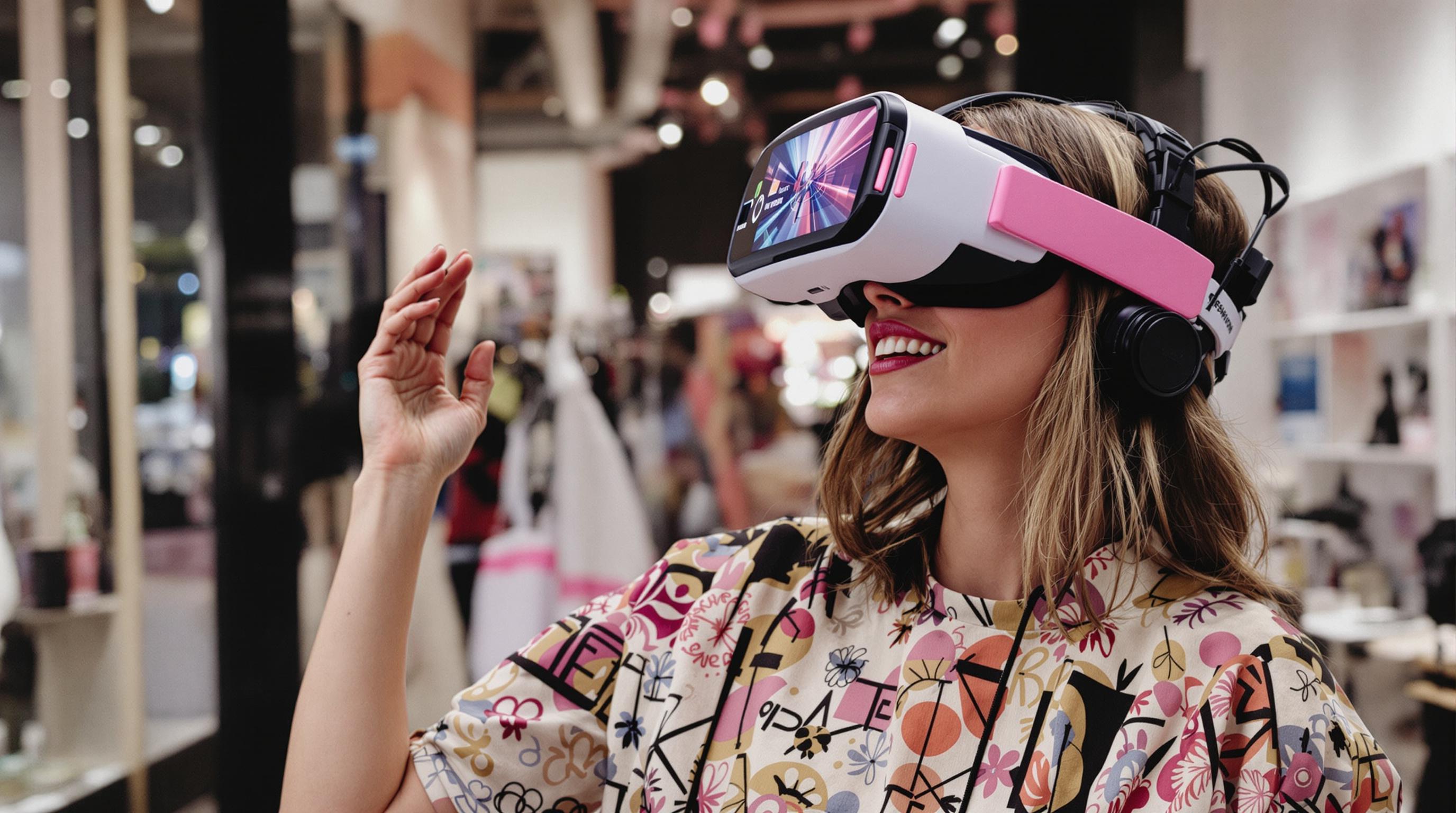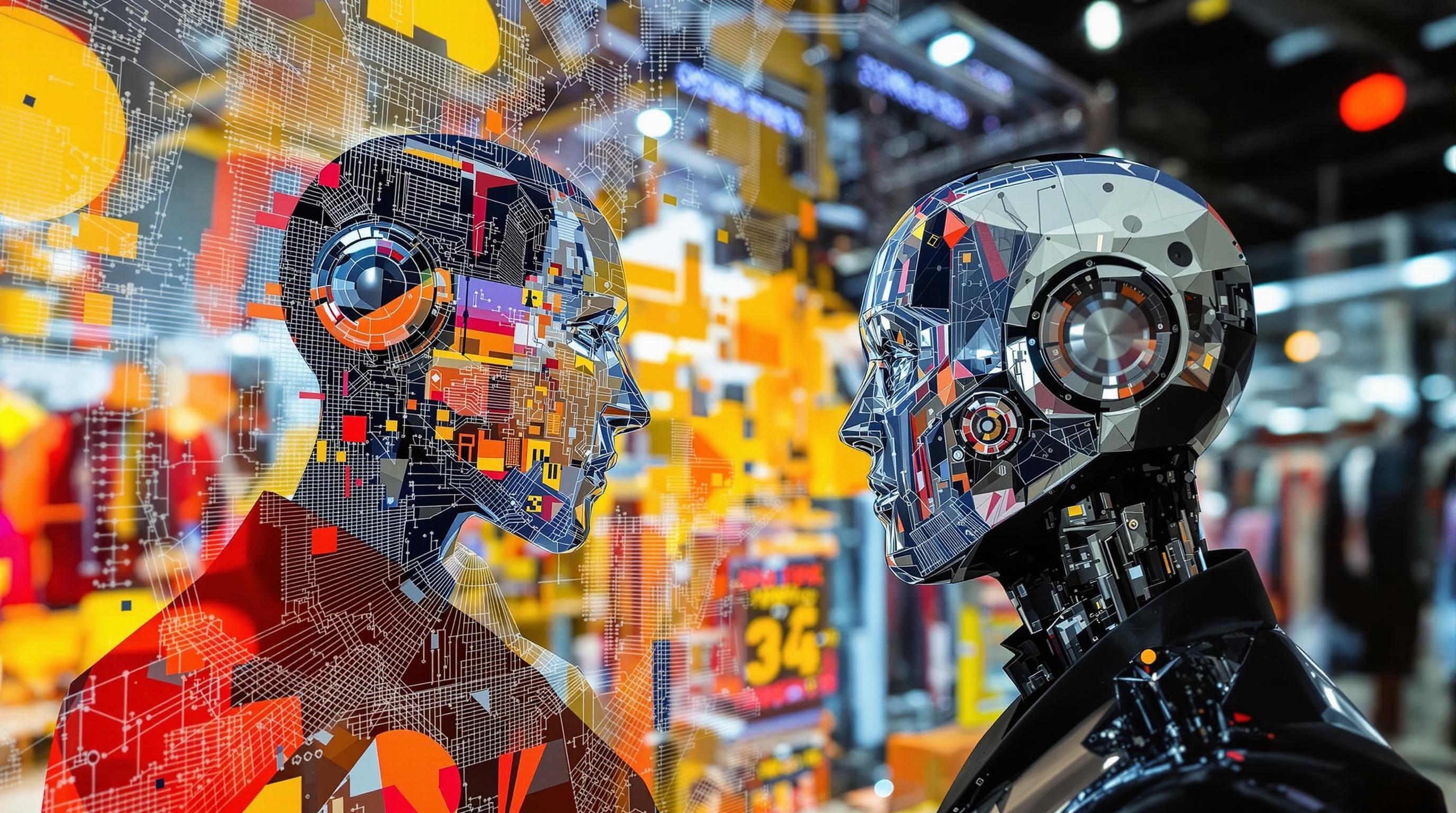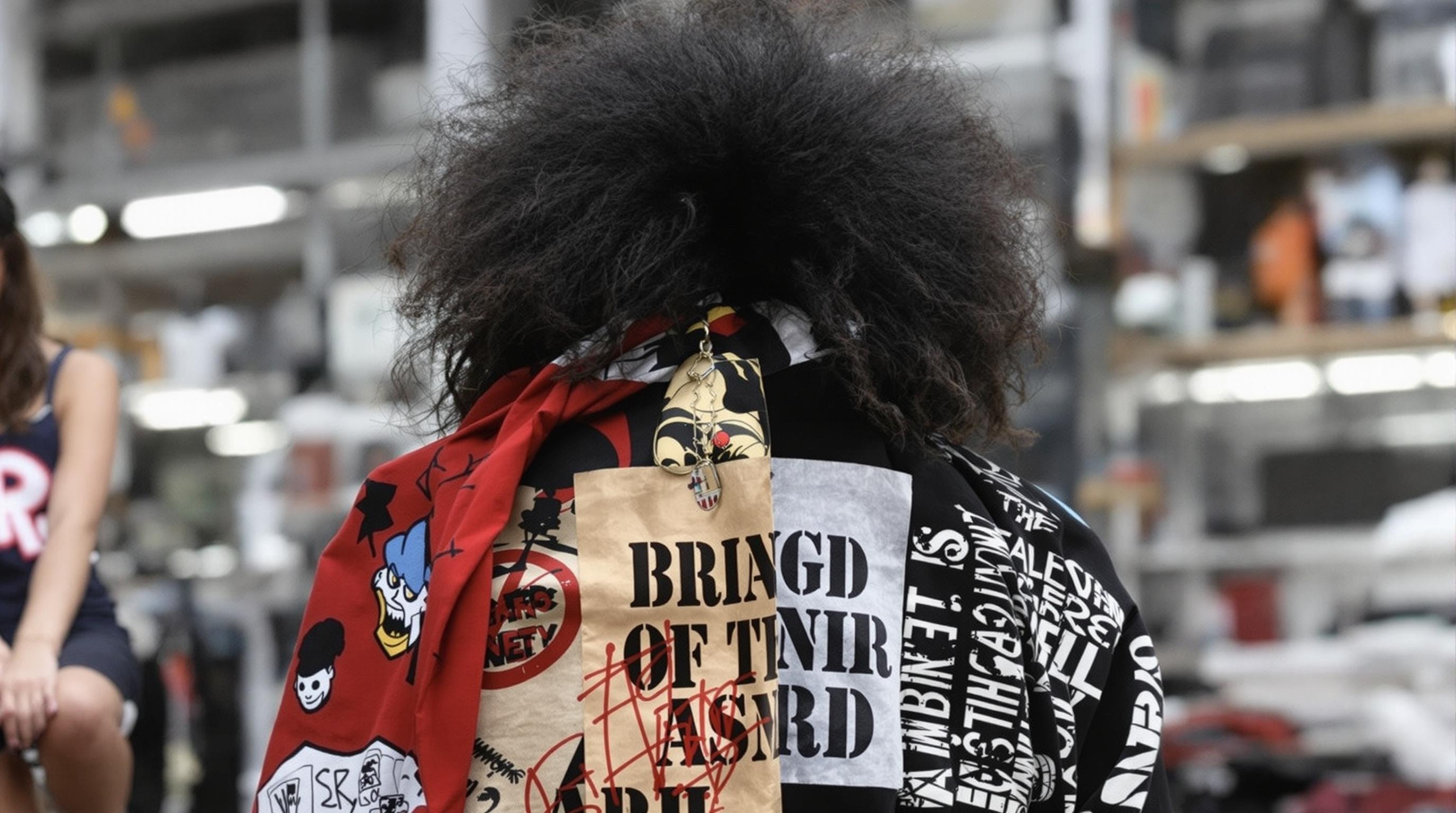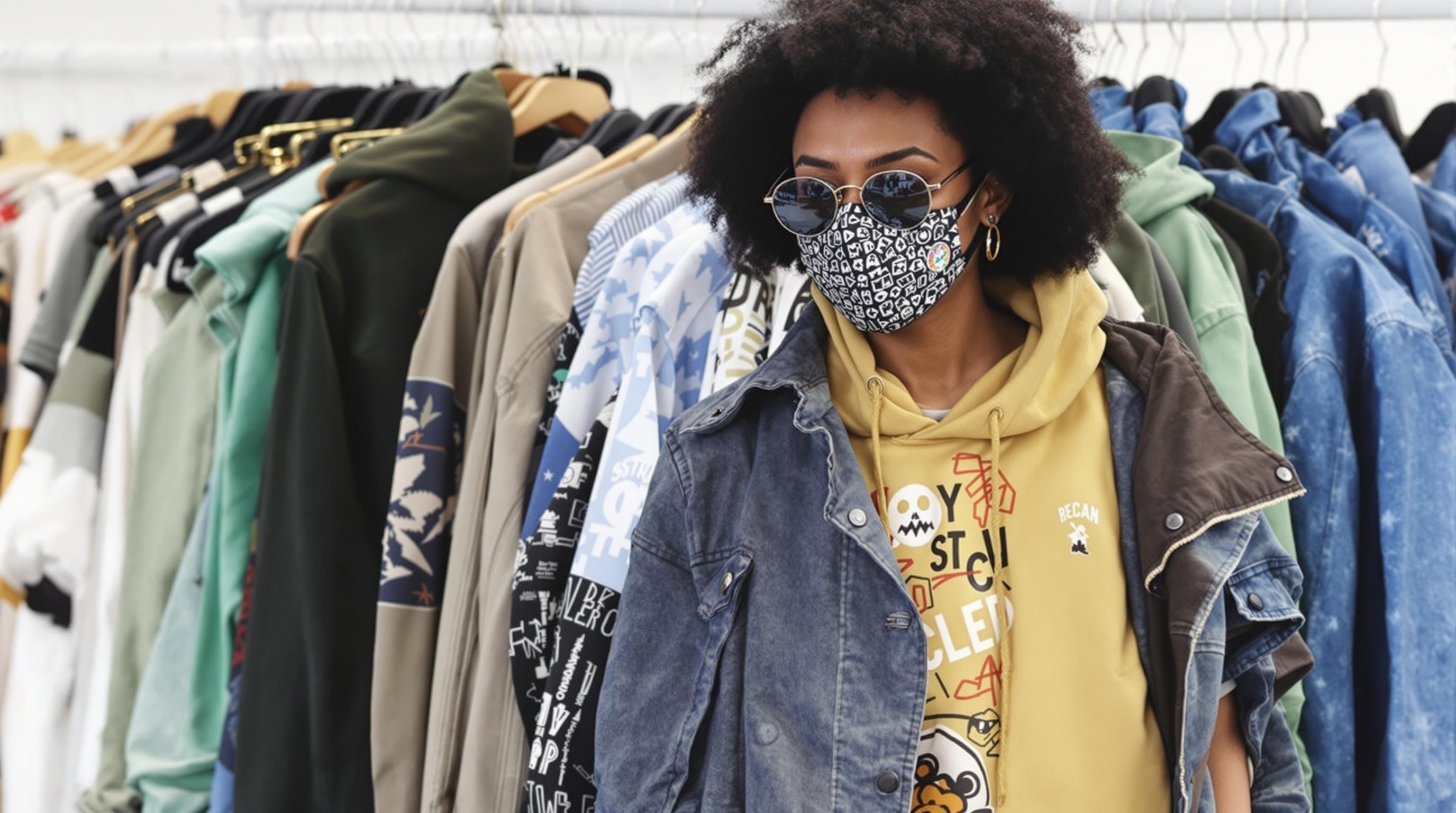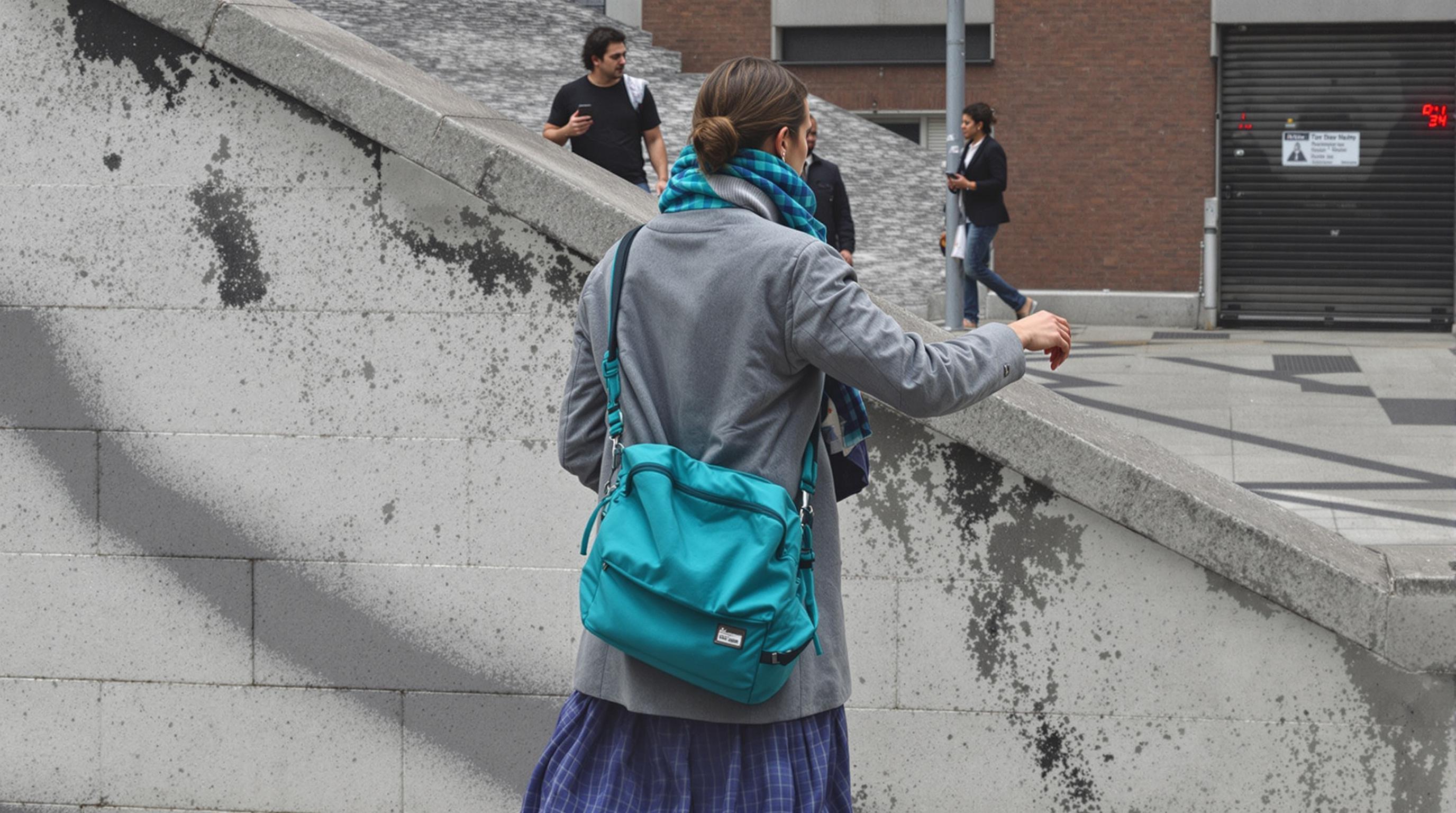Related Articles
- Fashion's Second Skin: The Underbelly of Wearable Tech and Its Surprising Roots in Previous Iconic Styles
- Shadows of Style: The Controversial Anti-Fashion Movements That Shook the Industry from Within
- Silent Statements: The Impact of Minimalism in Fashion's Most Overlooked Decades
- Distorted Reflections: The Role of AI in Shaping Fashion Perceptions and Consumer Trust in 2023
- Dressing the Future: How AI-Generated Designs Could Revolutionize Creativity and Profitability in Fashion
- The Art of Unfashion: How Anti-Fashion Movements are Reshaping Consumer Expectations and Market Strategies
Reimagining Fashion: The Impact of Virtual Reality on Consumer Engagement and Brand Loyalty in 2023
Reimagining Fashion: The Impact of Virtual Reality on Consumer Engagement and Brand Loyalty in 2023
In 2023, virtual reality (VR) has transcended its status as a cutting-edge technology and reshaped the landscape of consumer engagement and brand loyalty in the fashion industry. This article explores the transformative impact of VR on how consumers experience fashion, alter brand interactions, and foster loyalty, blending formal analysis with creative storytelling.
The Rise of Virtual Reality in Fashion
Imagine stepping into a digital wardrobe, where the latest fashion trends are literally at your fingertips, ready to be tried on in stunning virtual forms. This dream is now a reality, with brands like Gucci and Balenciaga leading the way in integrating VR technology into their marketing strategies. In fact, a survey conducted by PwC indicated that 85% of consumers want to experience products in an immersive environment before purchasing (PwC, 2023). With the rapid growth of VR technology, the fashion industry has seen a significant shift towards more virtual experiences, aiming to captivate a broader audience.
Consumer Engagement: A New Era
Virtual reality has opened up a new realm of consumer engagement that goes beyond the conventional online shopping experience. According to a report from Statista, 54% of consumers aged 18-29 expressed interest in shopping through VR applications (Statista, 2023). Companies are utilizing VR to create breathtaking showrooms, allowing users to explore collections in an immersive environment. For instance, in 2023, Dior launched its "Virtual Runway" event where users experienced a fashion show from the comfort of their homes, providing a sense of presence without the need for physical attendance.
Brand Loyalty through Virtual Experiences
Building brand loyalty in the age of digital distraction is no easy feat, but VR's immersive capabilities offer a unique solution. By personalizing experiences, brands can engage consumers in a way that traditional marketing methods cannot. A case study from Adidas showcases how they have integrated VR into their retail strategy. By offering virtual fitting rooms that allow customers to see how clothes fit them in real-time, Adidas has reported a 30% increase in return customers who appreciate the convenience and personalization of their shopping experiences (Adidas Marketing Report, 2023).
Telling a Story: The Power of Narrative in Virtual Reality
The magic of fashion is often intertwined with narratives—stories that evoke emotions and inspire connections. Brands are harnessing VR to create compelling storytelling experiences that resonate with consumers. For instance, Ralph Lauren’s VR experience, "The Art of the Runway," allows users to dive into the creative process behind their collections, uncovering the stories behind each piece. This approach not only engages consumers but also fosters a deeper emotional connection with the brand, ultimately enhancing loyalty.
Technology Meets Creativity
As an 18-year-old teenager trying to navigate the world of fashion, I remember the dizzying choices in my favorite stores, often feeling lost amid the trends. Virtual reality, however, has transformed that feeling into an exciting digital adventure. With brands like Zara and H&M creating their own VR platforms to showcase seasonal launches, it’s like having a personal stylist in another dimension, and I love it! VR allows us to curate our unique styles, often leading to purchase decisions that feel more informed and deliberate.
Challenges and Opportunities
Despite its growing prominence, the integration of VR into the fashion industry does face challenges. One concern is accessibility; not everyone has access to the required hardware, creating a potential digital divide. Additionally, the cost of developing high-quality VR experiences can be daunting for smaller brands. However, those that invest in this technology see the potential to stand out among competitors, proving that the high initial costs could yield long-term benefits in customer loyalty and brand recognition.
Statistics that Speak Volumes
According to a study published in the Journal of Business Research, brands that utilize immersive technology tend to see a 25% increase in customer satisfaction, which translates into a 15% uplift in brand loyalty (Journal of Business Research, 2023). Not only do customers enjoy being part of an immersive experience, but they are also more likely to return to brands that utilize this technology. This creates a strong cycle of engagement and loyalty that benefits both consumers and brands.
What’s Next? The Future of Fashion and Virtual Reality
So, what does the future hold for VR in fashion? Expect more collaborations between fashion houses and tech companies, leading to groundbreaking innovations in how we interact with clothing. Gamification is becoming a key trend; for example, brands may implement virtual rewards systems that incentivize customers to explore their VR platforms regularly. The idea of "shoppertainment"—combining shopping with entertainment—will become increasingly prevalent, allowing consumers to engage with brands in a more enjoyable and memorable way.
Real-Life Impact
Consider the story of Amy, a 24-year-old fashion enthusiast who had been hesitant to invest in online shopping due to her inability to try garments before purchasing. Last summer, she experienced a VR app from a well-known clothing brand that allowed her to visualize outfits on a 3D model of herself. Amy was thrilled to find the perfect fit and vibrant color she wanted, a purchase decision backed by visual confirmation. Since then, Amy has become a loyal follower of the brand, consistently returning to their VR platform for the latest collections.
Persuasion Through Personalization
Let’s be honest, it’s a competitive market out there. With hundreds of brands vying for attention, personalization is more than just a nice perk—it’s critical to survival. Virtual reality allows brands to gather data on consumer preferences, enabling them to tailor experiences that suit individual tastes. Personalized recommendations through virtual try-ons and curated virtual shopping experiences mean consumers feel uniquely catered to, and that translates to higher loyalty rates.
The Role of Influencers in VR
No exploration of fashion in 2023 would be complete without mentioning the role of social media influencers. Brands are teaming up with VR-savvy influencers to spread awareness and create buzz around their VR shopping experiences. These influencers lead guided tours through their favorite collections, making the experience relatable and accessible to younger demographics. For instance, in an activation with influencer Himalaya Dhillon, she crafted a unique VR shopping experience for her followers that resulted in an impressive 200k views and skyrocketed engagement for the brand (Influencer Marketing Hub, 2023). This suggests that when influencers articulate their positive feelings about VR, their followers are encouraged to dive into it as well.
In Conclusion
As we journey through 2023, the intersection of fashion and virtual reality is reshaping consumer engagement and brand loyalty in unprecedented ways. By introducing immersive and interactive experiences, brands can forge deeper emotional connections with their audience, ultimately leading to a more dedicated consumer base. Whether you are a fashionista or simply someone looking to refresh your wardrobe, the evolving world of virtual reality is making shopping an adventure that resonates beyond the ordinary.
As brands continue to innovate and adapt to this growing technology, we can only imagine the future possibilities. In the vibrant world of fashion, where each thread tells a story, VR is the new fabric that’s weaving consumers and brands into an intricate tapestry of loyalty and engagement.
